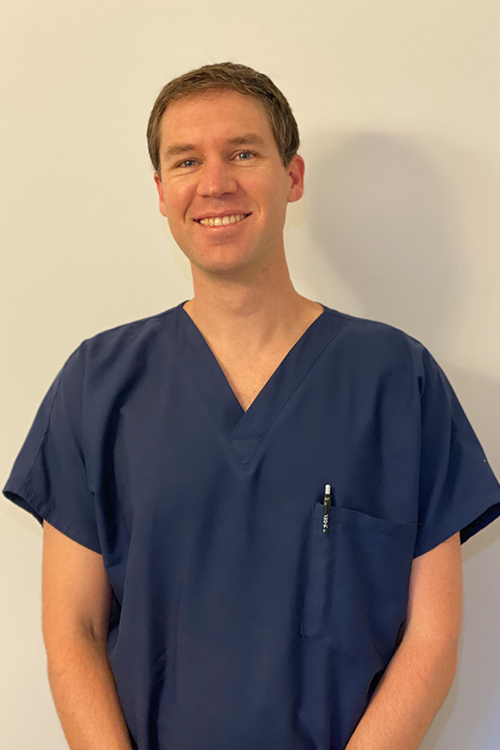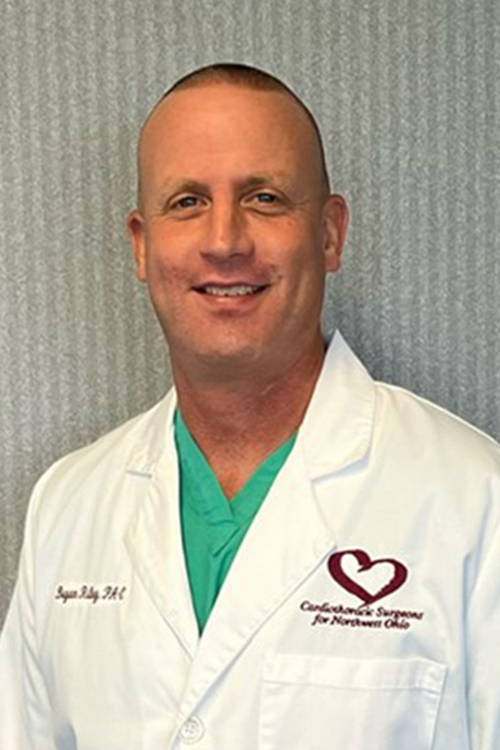Best Practices for Optimal Harvesting

Chase Hungerford is a PC-C, who lives and works in the Los Angeles, CA, area. He earned a bachelor's degree in Kinesiology and Exercise Science from California State University of Long Beach and then went on to earn a Master of Physician Assistant Studies from the University of Southern California. Chase has worked in the cardiovascular operating room for more than 9 years and in that time he estimates that he has completed over 800 endoscopic harvesting procedures. He says that his time in the CVOR has provided a challenging and rewarding career with the opportunity to help support patients in some of the darkest moments of their lives. Chase advises beginning harvesters to not rush the dissection portion of the EVH process, as the time spent during dissection helps with the remainder of the procedure.

Bryan Riley lives in Sylvania, Ohio, and is employed as a PA-C at Promedica Toledo Hospital. His educational background includes a Master’s Degree in Physician Assistant Studies. Bryan has worked in CV surgery for 20 years. He says he enjoys the variety of cases seen in the CVOR, and he values the responsibility and independence PA-Cs have. For Bryan, the most interesting cases are those that initially seem straightforward but then end up being a challenge. He says that solving the issue and then having a successful outcome is a valuable learning experience. Bryan says the most rewarding cases are those where he sees a new harvester gain confidence and then successfully complete a case on their own.
- Video Transcription
-
Can you describe your technique to successfully divide branches when using the VirtuoSaph Plus EVH System?
Chase Hungerford: "There are three key points in using the V-Cutter with the VirtuoSaph Plus EVH System. Engage, ground, cut. And I would like to add when you are grounding you can use your let's say non-dominant hand to apply pressure on the outside of the leg to ensure even grounding, which allows for a better cut and cauterization on the vein."
Bryan Riley: "To successfully divide branches, I think the first most important thing is getting a good dissection done, and spending time to make sure that the branches are easily visible and can be engaged. And then when I'm at the point where I'm ready to start dividing branches, I always make sure that I am well-grounded against the tunnel wall and allow time for the cautery to do its job."
Some may believe that the V-Cutter is not suitable for larger branches. How do you address this perception, and what techniques can you share for effectively utilizing the V-Cutter on larger branches?
Chase Hungerford: "New harvesters and others may have an appropriate fear of having too large a branch to appropriately cauterize with the V-Cutter. First, I would like to say that's a healthy fear and you should use that to your advantage and remind yourself to slow down and use all of your tips and techniques to have a successful harvest. So, first, most likely, I would address it with a branch capture technique. I would really try and dig out the base of that branch to ensure that there isn't a bifurcation or trifurcation that you could approach each of those vessels independently and obviously have a much easier time than taking a larger vessel.
However, if it is a large vessel, which I have encountered several, I remember one in the early part of my career where I actually made an extra incision and tried to do some fancy things to get that branch and physically tie it off. At the end of the day, I ended up just using the tried-and-true techniques of branch capture, good grounding, I added a little bit of pressure from the outside of the leg to ensure that I had good grounding and then just sit on it, using the cutting device and take our time and go through that branch slowly. And it worked out."
Bryan Riley: "When I encounter a large branch with the V-Cutter, there's various steps that I take to ensure a safe dividing of the branch. First of all, I try to make sure that I dissect around the vessel more than normal and I try to ensure that I have enough length on the branch to get a successful division in. Secondly, I will disengage the harvester from the main vein and then reattach it, isolating the branch itself. Once I engage the V-Cutter into the branch, I will alternate between using spot cautery by engaging the spot cautery button on the harvester and applying energy to the back of the vessel. And then I will switch to just the normal bipolar energy and alternate between the two and taking my time and making sure that I allow enough time for the vessel to be safely divided. I've never run into a vessel that I wasn't able to harvest using this using this technique."
What is your key piece of advice on the harvesting technique for someone that is going through the initial learning period of EVH using Terumo’s system
Chase Hungerford: "So, one of the key pieces of advice I give to new harvesters or people who are starting out with the Terumo device with the V-Cutter: To ensure good cauterization, you need to engage, ground, cut. And one of the ways I quickly remind new learners of this is I use the term ‘window licking’. So, I explain to them, imagine a kid who is sticking their tongue out at you on the other side of a window and then they put their tongue up against the window and that has very unique view. And this is a good way to remind yourself in a friendly way to engage, ground, cut. If I'm training a new provider and I see them starting to cut, I'll say, you know, don't forget to lick the window and then they usually slow down, engage, probably re-engage, ground for sure, and then start cutting."
Bryan Riley: "For somebody that's starting with EVH and the Terumo system, it's important to be open to learning, open to spending time, and not rushing it. It's a very easy system to use, but it takes time to understand the technique and to develop the skills to harvest quickly. So, it's important not to worry in the initial stages about getting it done fast. The important thing is to get the technique down, to get a good dissection done, and to harvest the branches without causing damage to the vein. So, the most important thing is to be patient and allow time."

